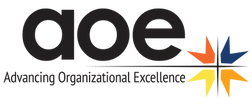Knowledge Management
- Tom Merritt
- Sep 16, 2020
- 3 min read
Updated: Jul 20, 2023
We are happy to share this article from AOE client Tom Merritt, President of H.R. Gray, an Anser Advisory company, on the importance of managing and maximizing the wealth of knowledge within your organization.
“Knowledge is power? No. Knowledge on its own is nothing but the application of useful knowledge, now that is powerful.” – Rob Liano, business strategist and author.
This quote really resonates with me. How many times have we heard over the years that knowledge is power? Yet, if we are not putting it to work and sharing what we know, through our own experiences and learnings, it is basically useless. With competition in high gear and our workforce being overloaded with information, managing and maximizing knowledge within your organization is more important than ever.
What exactly is knowledge management? It is a philosophy and a formalized approach, embedded in the organization’s culture, to how we integrate knowledge gained through experience, interpretation, networking and application with our strategies, processes, culture and behavior. To put it simply, we need to tap into the wealth of knowledge that our employees possess and ensure that it is readily available to everyone across the organization.
A great article, Working Knowledge, How Organizations Manage What They Know, speaks to the importance of building a strong knowledge management culture.
Knowledge is basically information in context. It comes alive through experiences, values, insights and judgements and is always evolving. We all have people within our organizations who are subject matter experts (SMEs). Yet how many of us fail to shine a light on their expertise and ensure that others have easy access to it?
At H.R. Gray, we have formalized several processes for knowledge gathering and transfer. For example, we established a monthly lunch and learn program where senior managers chose the topics, based on relevance to the team and importance to the business, and present these to all staff. Senior staff also created a construction administration procedures manual which is incorporated into in-house training during our lunch and learns.
In addition, a new procedures manual was developed for our construction inspectors which provides forms, policies and best practices to assist them in the field.
While the immediate value of these tools and processes is significant, the practical knowledge that they provide, gained through years of experience, can be shared throughout the organization for years to come—in essence, becoming an integral part of our culture.
As we build our knowledge management culture, we must make the flow of knowledge usable and accessible. Do your employees know who your SMEs are, what resources are available and how to access them? The transfer of knowledge naturally occurs in the work environment. But it is generally fragmented and often gets lost in the information overload we experience every day. Centralizing collected knowledge leads to more engaged and knowledgeable workforce, greater efficiencies (how many hours have your employees spent looking for information that may be outdated?) and higher profitability.
KM World underscores the importance of establishing a single source of information so that every resource is created, managed (or edited) in one place. This will help ensure data is authentic, relevant, and referable and will allow employees to collaborate in a unified manner.
A single source of information is a great start. But we can’t stop there. Making knowledge flow an integral part of the organization’s culture is imperative. As leaders, we must set an example for our team by reading books and researching industry trends and new technologies.
In addition, succession planning, a critical element of any business plan, should be a priority for every leader. To ensure that the flow of knowledge becomes ingrained in the culture, it is vitally important to identify your future leaders and spend time with them, sharing the organization’s vision, your experiences and lessons learned.
Knowledge sharing does not end with organization leaders. Senior team members should be encouraged to communicate those “if I knew then what I know now” moments and share both successes and failures as well as how these impacted future decisions and strategies. Employees who impart their knowledge should be rewarded and job candidates should be evaluated on their potential for knowledge gathering and sharing behaviors.
Ultimately, all employees must be educated on the benefits of knowledge management and the role they play in building a knowledge-based culture. By engaging your employees, you are building a team of knowledge champions—those who will be excited about knowledge management and help drive its success.
.png)